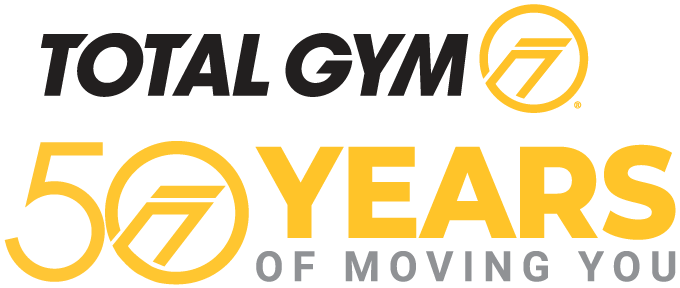News
Getting it Right: Postural Alignment on Total Gym
As a PT, I am always concerned about how bad posture can be the catalyst to musculoskeletal, neural, digestive, urogenital and cardiovascular issues. If posture was an easy correction, then we would see more ideal postures with our clients. Achieving a more ideal posture encompasses education on lifestyle habits, biomechanics, and exercise to strengthen postural muscles. Using a mirror to provide visual feedback on postural faults, and how to correct them, can be the first step to build awareness; however, most people are not in front of a mirror with everyday activities. Thus teaching the person to feel a more ideal posture becomes the next step. From there, education on sitting, standing and moving can take place. Inform patients that achieving ideal posture is a journey. Taking the initial steps may seem insurmountable and overwhelming, but commitment and consistency will pay off.

Within the journey, you may find ideal posture, then sickness, pain, travel, work, pregnancy, etc. can have our posture veering into poor pattern. To help counteract these sidetracks, enhance one’s flexibility, strength and stability within the body.
There are multiple exercise techniques such as Yoga, Pilates, Tai Chi, and Feldenkrais which help improve posture. Regardless of the exercise style, there is a common theme, cuing for postural alignment. Which is the best method? The method that the client finds him/herself most attracted to and likely to adhere to. The essence of the Total Gym is that you can transfer many of your favorite exercises onto it. Below are some postural considerations when implementing some of your favorite exercises.
- Squats: Allow pelvis to drop off the edge of the glideboard to facilitate anterior pelvic tilt.
- Seated Forward: Tendency is for people to lean backward increasing thoracic kyphosis and/or posterior pelvic tilt.
- Seated Backward: Due to the incline of the board, it can be more challenging to sit in a neutral position. Thus inclining the board can facilitate a more neutral position and impede posterior pelvic tilting.
- Seated Lateral: The glideboard inclined can encourage unwanted side bending of the trunk and irritability for those with postural faults.
As mentioned previously, cuing is essential. Here are some cues to facilitate alignment.
Cuing on Total Gym PowerTower
Forward Head
- Drop the chin slightly and push the back of the head backward.
- Fingertip on the nose and one on the back of the head at the occiput. Draw an imaginary line between the fingers with an arrow toward the nose. You want the line to be parallel to the ground.
Elevated Shoulders
- Slide shoulders away from ears.
- Feel the shoulder blades glide into back pockets.
Thoracic Kyphosis
- Keep the chest lifted.
- Imagine the collarbones widening.
- Visualize showing off a favorite necklace.
Posterior Pelvic Tilt
- Stick buttocks backward.
- Feel a string lifting buttocks.
- Imagine guy wires attached to the inner thighs, pulling the inner thighs back.
Anterior Pelvic Tilt
- Gently tuck the hips under.
Lastly here are my favorite postural strengthening exercises. They lengthen the front of the chest, strengthen the back, and challenge the core.
- Diagonal Pull
- Elevate glideboard to help prevent posterior pelvic tilting.
- Watch for excessive shoulder elevation.
- Reverse Fly
- Focus on shoulder blades gliding together versus shoulder elevation.
Wellness Session on Total Gym
- Offering
- Focus on keeping the width in the chest with forward flexion and with shoulder horizontal abduction allow the chest to open. Use the feet on the ground while the arms move outward to avoid excessive stretch and to assist from moving from an over-stretched position.
- Prone or Low Kneeling Upper Back Extension
- The cables here are used for feedback as to when to stop moving.
- Low kneeling can position the low back into a posterior pelvic tilt, which can assist clients whose tendency is to move from their low back.
- Prone is also a nice way to provide spinal support and feedback for those who need greater awareness.
- Supine Pilates Midback Series (Pullovers; Shoulder Adduction; Triceps Press)
- Like prone provides a greater spinal support and awareness.
- If needed, use a pillow and/or wedge under the head and/or rib cage to assist with alignment.
- Note reaching the arms overhead can be a great way to stretch the LATs, however, to exit this position, bend the elbows and pull the elbows to the ribs and hands to the shoulders (pulldown).
- Alternating Shoulder Extension and Hip Extension.
- Incline glideboard can decreased resistance to weight bearing upper extremity.
- A parallel glideboard may mimic the floor, but stability requirements are higher with a moving glideboard.

Elizabeth Leeds, DPT, owner of Seaside Fitness and Wellness, combines her background in physical therapy, personal training and Pilates in her practice and teaching. As a pelvic floor physical therapist working at Comprehensive Therapy Services in San Diego, her passion for pregnancy and postpartum is seen in her mission to empower women with knowledge and understanding of their physical changes, and how to address them to prevent future issues. Additionally, Elizabeth is a Master Trainer and developer for Total Gym’s GRAVITY education.
